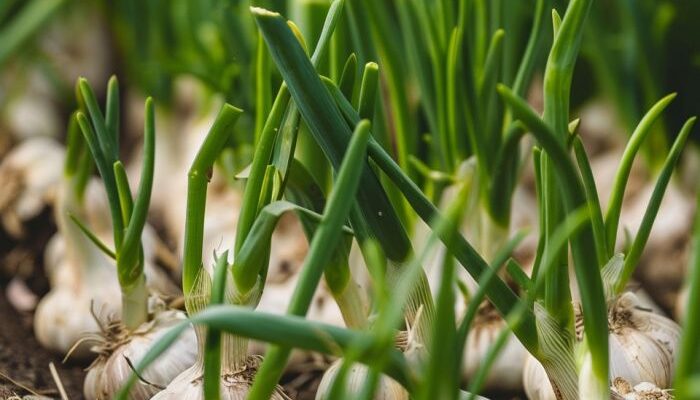Garlic is not just a staple in kitchens for its pungent flavor and aroma; it also offers numerous health benefits including antibacterial and antiviral properties. However, buying garlic can sometimes be costly or inconvenient, and store-bought bulbs may not always meet your standards for quality or organic status.
Good news is that with the right tricks and techniques, you can cultivate a sustainable and perpetual supply of garlic right in your own home or garden. Here are ten effective strategies to grow and maintain a never-ending supply of garlic.
1. Choose the Right Variety
Selecting the appropriate type of garlic is crucial for success. There are generally two types of garlic – Softneck and Hardneck. Softneck varieties are known for their storage capabilities and are typically what you find in stores, while Hardneck types offer a variety of flavors and larger cloves. Research and choose a variety that suits your climate and culinary needs.
2. Plant at the Right Time
Timing is important when it comes to planting garlic. In general, it’s best to plant garlic cloves in the fall before the ground freezes in colder climates. In milder climates, garlic can be planted during late winter or early spring. Planting at the right time will ensure your garlic gets a proper head start.
3. Prepare the Soil Properly
Garlic prefers well-drained, fertile soil with plenty of organic matter. Before planting, incorporate compost or well-rotted manure into the soil to improve fertility and drainage. A pH level between 6.0 and 7.0 is ideal for garlic.
4. Plant Garlic Cloves Correctly
Separate the cloves and plant them pointy end up, about 2 inches deep and 6 inches apart. Make sure the cloves are covered with enough soil without being compacted, as garlic needs space to develop.
5. Mulch for Moisture and Weed Control
After planting, apply a thick layer of organic mulch, such as straw or leaves. Mulching helps retain moisture in the soil, regulates temperature, and prevents weed growth, which can compete with your garlic for nutrients.
6. Provide Adequate Water
Garlic needs a consistent supply of moisture, so water regularly, especially during dry spells. However, avoid overwatering as garlic does not like soggy soil, which can lead to bulb rot.
7. Practice Proper Garlic Care
As your garlic grows, it will require minimal maintenance. Keep an eye on the mulch and reinforce as needed. Remove any weeds that manage to get through manually to avoid disturbing the garlic’s shallow roots.
8. Harvest at the Right Time
Garlic is typically ready for harvest when the lower leaves turn brown but several green leaves remain. This usually occurs in mid-summer, depending on your planting time and climate. Carefully dig up the bulbs, taking care not to damage them.
9. Cure and Store Garlic Properly
After harvesting, dry or ‘cure’ the garlic by hanging it in a cool, dry place with good air circulation. Once cured, garlic can be stored for many months. Choose a dark, dry location for storing your garlic to preserve its quality.
10. Save Cloves for Replanting
Finally, ensure a never-ending supply by selecting the healthiest and largest cloves from your harvest to replant for the next season. This way, you’ll not only save money but also cultivate a garlic strain that is well-suited to your local growing conditions.
These strategies not only save you from frequent trips to the store but also let you enjoy home-grown, organic garlic. With a bit of effort and care, you can turn your kitchen or garden into a garlic-producing powerhouse.



